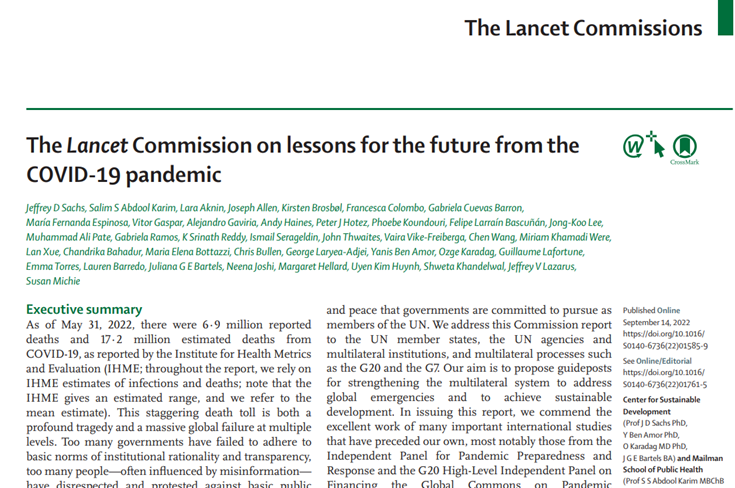
This is an example of the reality that we really did know just about everything about transmission very early in the pandemic. A short thread:
https://twitter.com/j_g_allen/status/1581597800076148736
Feb 9, 2020 - airborne, ventilation, filtration, portable air cleaners...
https://twitter.com/j_g_allen/status/1359078262312378370?s=20&t=OXN1AdVmbHb3SfDgpj2srw
March 4, 2020. repeat of my Feb 2020 article essentially, but this time for US audience. (NYT rejected this piece in JANUARY 2020. Took me another 6 weeks to convince them...)
nytimes.com/2020/03/04/opi…
nytimes.com/2020/03/04/opi…
March 26, 2020. Fomite risk wildly overstated. Yes, you can accept packages and the mail. No, you don't need to wipe down groceries.
washingtonpost.com/opinions/2020/…
washingtonpost.com/opinions/2020/…
April 2, 2020. Everyone should wear a mask. They work.
washingtonpost.com/opinions/2020/…
washingtonpost.com/opinions/2020/…
Before I get "@'d" on masks. They all work. Some better than others. Also very true that efficacy at population scale can be different than efficacy on individual scale AND this can change over time (behavior, compliance, variants, type of mask...)
https://twitter.com/j_g_allen/status/1476176934568611843?s=20&t=OXN1AdVmbHb3SfDgpj2srw
Back to thread. April 20, 2020. Layered defense. Hierarchy of Controls...
https://twitter.com/j_g_allen/status/1252262065152163843?s=20&t=OXN1AdVmbHb3SfDgpj2srw
April 29, 2020. Hierarchy of Controls. w/ my #HealthyBuildings co-author @cleantechcities
hbr.org/2020/04/what-m…
hbr.org/2020/04/what-m…
And then wrote a few to address misguided focus on low-risk environments rather than actual high risk locations.
May 18, 2020. Introducing how ventilation and filtration work on airplanes, and why airplanes are low risk...
washingtonpost.com/opinions/2020/…
May 18, 2020. Introducing how ventilation and filtration work on airplanes, and why airplanes are low risk...
washingtonpost.com/opinions/2020/…
June 2, 2020. Wrote a piece shortly after this pointing out that elevators are low risk...introducing "intensity, frequency, duration"...
usatoday.com/story/opinion/…
usatoday.com/story/opinion/…
Then, focus on schools...
June 12, 2020
June 12, 2020
https://twitter.com/j_g_allen/status/1271401451663785984?s=20&t=OXN1AdVmbHb3SfDgpj2srw
June 20, 2020. Yes, kids should be going back to school in the fall. Low risk from covid, high risk from disruption, AND we know how to protect kids AND adults in schools.
washingtonpost.com/opinions/2020/…
washingtonpost.com/opinions/2020/…
June 24, 2020. We paired the op-ed with a 60-page "how to" report...
https://twitter.com/j_g_allen/status/1275775632669057027?s=20&t=OXN1AdVmbHb3SfDgpj2srw
That summer we kept going. Built a tool to select portable air cleaner, 5-step guide for assessing ventilation, QAs for parents,
https://twitter.com/j_g_allen/status/1299653658406252547?s=20&t=OXN1AdVmbHb3SfDgpj2srw
On and on...
Anyway, I didn't intend to write a thread this morning. Just hit me that we knew so much, so early in the pandemic. And here we are coming up on 3 years, talking about what we knew on Day 1 (and before Day 1...article w/ @WaringIAQ Dec *2019*)
Anyway, I didn't intend to write a thread this morning. Just hit me that we knew so much, so early in the pandemic. And here we are coming up on 3 years, talking about what we knew on Day 1 (and before Day 1...article w/ @WaringIAQ Dec *2019*)
https://twitter.com/j_g_allen/status/1293853438632230918?s=20&t=OXN1AdVmbHb3SfDgpj2srw
Oooh, forgot a good one in this thread.
April 16, 2020, on N95s for healthcare workers and importance of FIT. Introduces "rainbow passage" and "user seal check" (and alerts issue of counterfeit KN95s from China).
w/ colleague David Christiani
statnews.com/2020/04/16/n95…
April 16, 2020, on N95s for healthcare workers and importance of FIT. Introduces "rainbow passage" and "user seal check" (and alerts issue of counterfeit KN95s from China).
w/ colleague David Christiani
statnews.com/2020/04/16/n95…
• • •
Missing some Tweet in this thread? You can try to
force a refresh





















